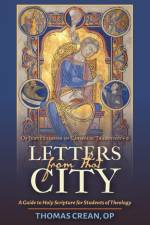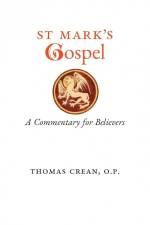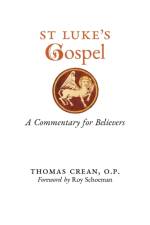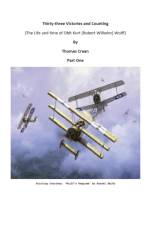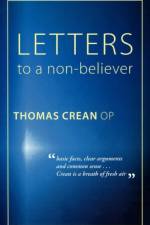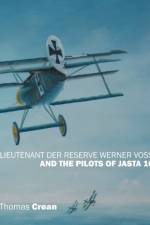von Thomas Crean
153,00 €
As Voss followed his intended prey down, firing his twin machine guns as he went, he became suddenly aware of planes behind him. Maybe a sixth sense or experience or even pilots instinct, caused him to spin in his seat, just in time to see the flight of S.E. 5 fighters diving upon him from above. Voss and his triplane broke off their attack on Chidlaw-Roberts' aircraft. He immediately turned and dropped into a perfectly executed half-spin and suddenly Voss found himself surrounded by enemy aircraft. He noticed, through situational awareness, that a flight of Camels were several thousand feet below, so flying in that direction was impossible and a flight of SPADs and Camels were circling high above, ruling out that direction as well. 56 Squadron started out organized and in pairs as they dove upon their prey. McCudden had formulated his trap, upon which he thought there was no escape for the German pilot. McCudden in (B4863), coded "G" and 2/Lt. Rhys Davids in (B525), coded "I" were in the first pair and would attack Voss at roughly the same time. McCudden went right, Rhys Davids went left, 2/Lt. Muspratt in (A8944) coded "H" and Capt. Hoidge in (B506), coded "J" both at the top and bottom of an open mouthed box with his remaining two SE5's (Lt. Cronyn in (A4563), coded and Capt. Maybery in (B1), coded guarding any possible escape from the trawl. From McCudden's perspective, his plan should keep the German from diving to escape the trap, as he would be surrounded by the Sopwith Camels below. If he decided to climb above his trap, he would certainly be pounced upon, by the flight of SPADs and Camels from above.Voss on the other hand, had decided upon some evasive maneuvers of his own concoction. Instead, he decided to fight it out. When the leading S.E.5 pilots depressed their respective triggers together and as the first resounding rattle from their .303 gunfire let loose, Voss did the incredible. He looked over his shoulder, saw them coming and turned in a most disconcertingly quick manner, not a climbing or Immelmann turn Capt. McCudden wrote but a sort of flat half spin. Lt. Cronyn wrote Voss whipped around in an extra ordinary way, using no bank at all but just throwing his tail behind him. Voss expertly utilized the pitching & the acrobatic qualities of his rotary-engine triplane to his full advantage, against the faster but heavier and slower-turning S.E.5s. He accomplished this by kicking in full rudder, adding opposite aileron and adding a little elevator, so as to keep his aircraft level. All of this was completed in the blink of an eye.When Voss recovered from his unorthodox maneuver, he found himself surrounded by the six members of "B" flight and two of the S.E.5's that he had initially attacked him from 60 Squadron. The odds were eight British aircraft against one German Fokker triplane. The growing number of Allied aircraft in the area, tended to seal Voss's avenues of escape.As Voss turned his aircraft to face the approaching danger, he applied a bit more throttle power to his engine, and headed straight at his attackers. Voss was following the 'Dictas of Boelcke' after he had executed his flat, half-spin, which took the Allied flyers completely by surprise. What was even more surprising was that none of the bullets from either S.E.5 found their mark. He flew straight back towards his ambushers firing his twin Spandau machine guns as he came.

